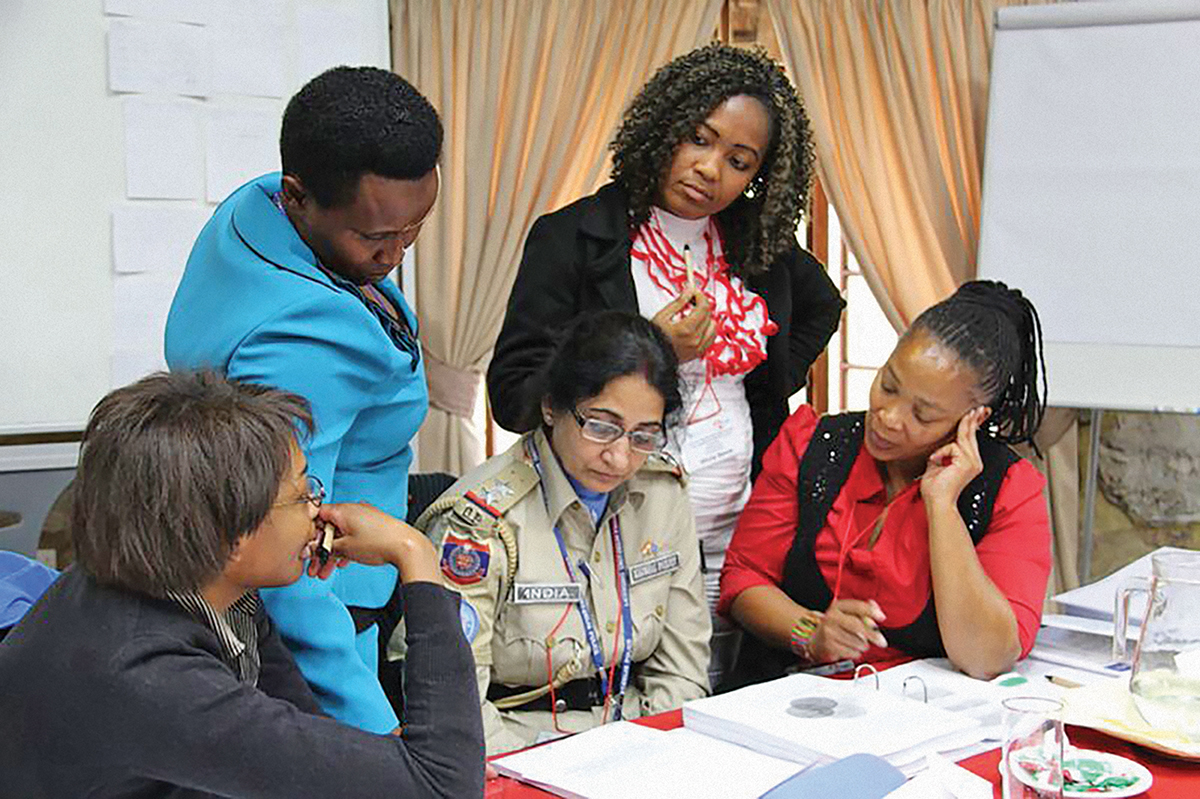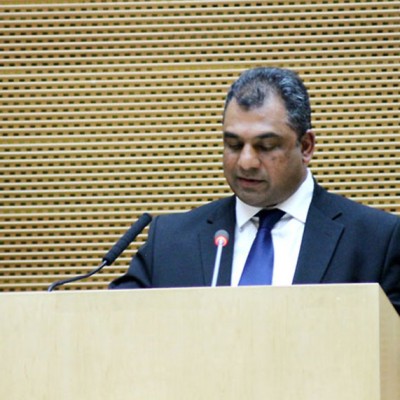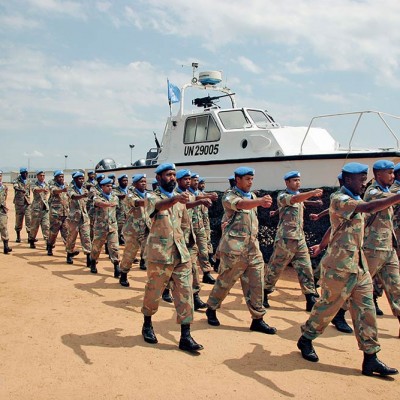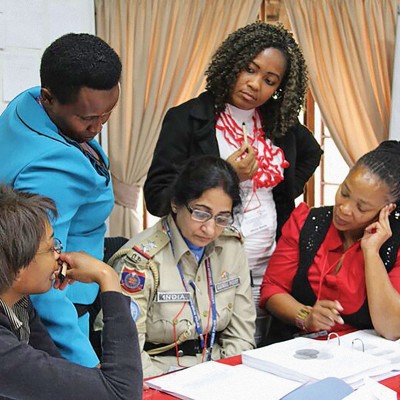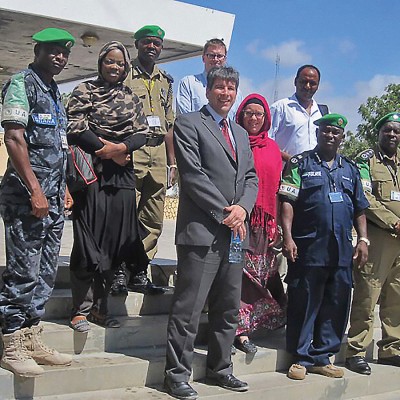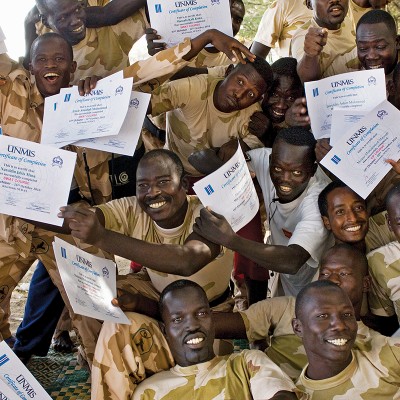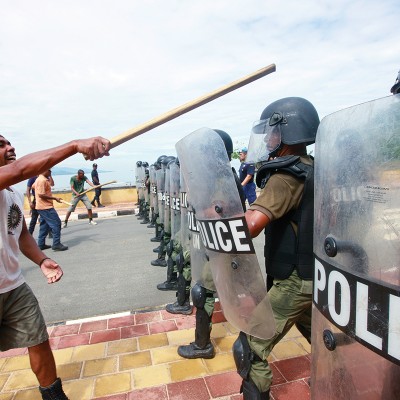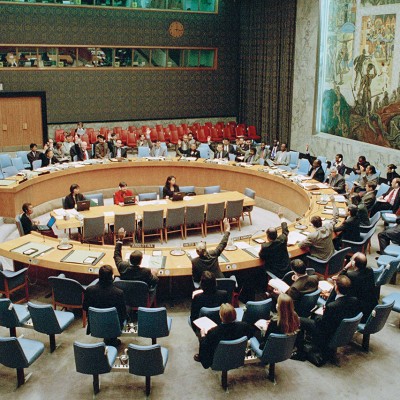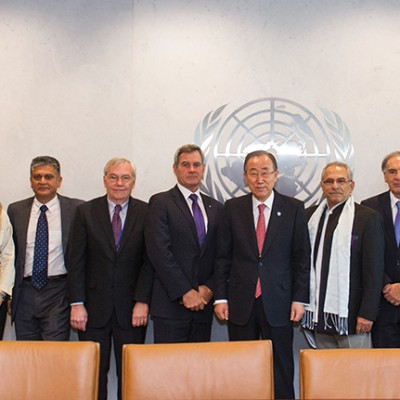Introduction
When the African Standby Force (ASF) was conceptualised in the early 2000s, one important determinant for its operationalisation was the requirement for a multidimensional approach that would serve to address the comprehensive set of needs of countries as they transitioned from conflict to peace. This approach was appropriate given the human effects and implications of insecurity and conflict on the lives and livelihoods of civilians the continent over. In addition to the human toll, the rule of law, justice and other state functions and institutions became further decimated in these conflicts. As such, it became increasingly important that in finding solutions, efforts were made to address such issues as related to governance, human rights and development – all of which required attention beyond the hard military-security realm. In the peace operations context, an increased emphasis was thus placed on the need for greater cooperation and synergy between uniformed and non-uniformed personnel. Indeed, recent African Union (AU) operations – such as those deployed to Somalia, Mali and the Central African Republic (CAR) – have been conferred decidedly complex and multifaceted mandates, calling on peacekeepers amidst other aspects to support state authorities in protecting their citizens; political transition and dialogue processes; stabilisation and post-conflict reconstruction efforts; and the restoration and consolidation of state authority.
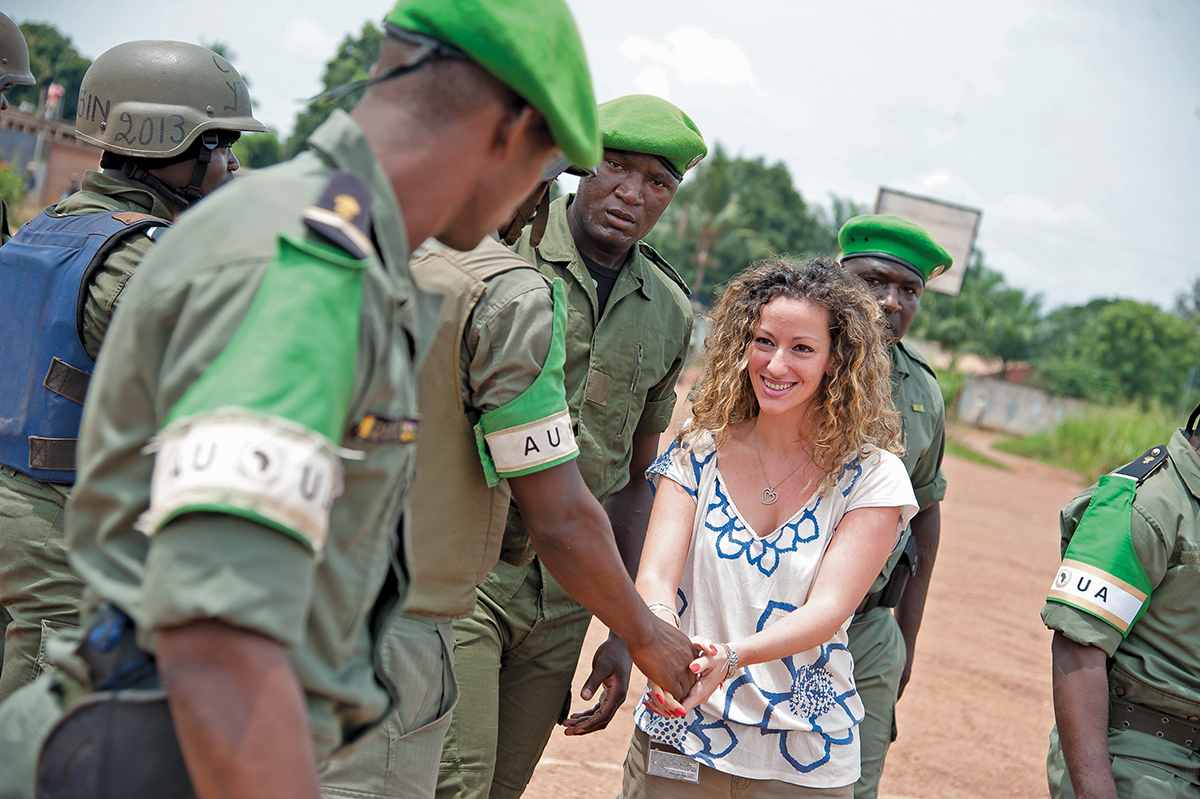
In addition, the AU is increasingly fielding multidimensional missions with increased civilian personnel (in terms of mandated strength). Whilst the AU Mission in Burundi (AMIB) had roughly 25 international civilian staff, the AU Mission in Somalia (AMISOM) has an authorised civilian strength of 70 staff. The African-led International Support Mission to Mali (AFISMA) was authorised with 173 civilian personnel (including a team of 50 human rights observers), while the African-led International Support Mission to the CAR (MISCA) was authorised with 152 civilian personnel.
It is within this general context of the need for applying multidimensional approaches in peace operations that the Training for Peace (TfP) in Africa Programme was able to assert itself as a significant peace and security actor on the continent, specifically with its contributions to the development of civilian and police capacities for both AU and United Nations (UN) peace operations. Notably, the programme has focused its attention on the development of these non-military capacities and then, increasingly, has supported the real-time utilisation of these capacities by these sending organisations. To these ends, the TfP Programme continues to support and contribute to the development of civilian (and police) capacities of the AU and UN peace operations in Africa through training, policy development and applied research.
This article highlights the work and achievements of the TfP Programme in the development of civilian capacities in the context of African peace support operations (PSOs). It also highlights some of the core challenges it has encountered in this endeavour and offers some recommendations to address these challenges.
The TfP Programme’s Role in Support of the Civilian Dimension Project
The civilian dimension project was undertaken within the context of efforts to develop the ASF, the concept of which was approved by the AU in 2004, with the intention of providing the continent with a rapid and efficient conflict response capacity. Initial efforts to establish the ASF were focused heavily on the military component of the force, and it was only from around 2006 that there were more concerted efforts to develop the civilian dimension. Given the lack of civilian personnel in the AU Peace Support Operations Division (PSOD) at the time to directly manage and implement the civilian dimension agenda, the AU relied on the expertise and resources of external support partners and programmes such as TfP, which in collaboration with other actors and partners commenced work in earnest on the civilian dimension agenda. With this mandate in hand, the programme has to date been able to directly and indirectly contribute to a number of key areas in support of civilian capacities for the ASF and African-led peace operations.
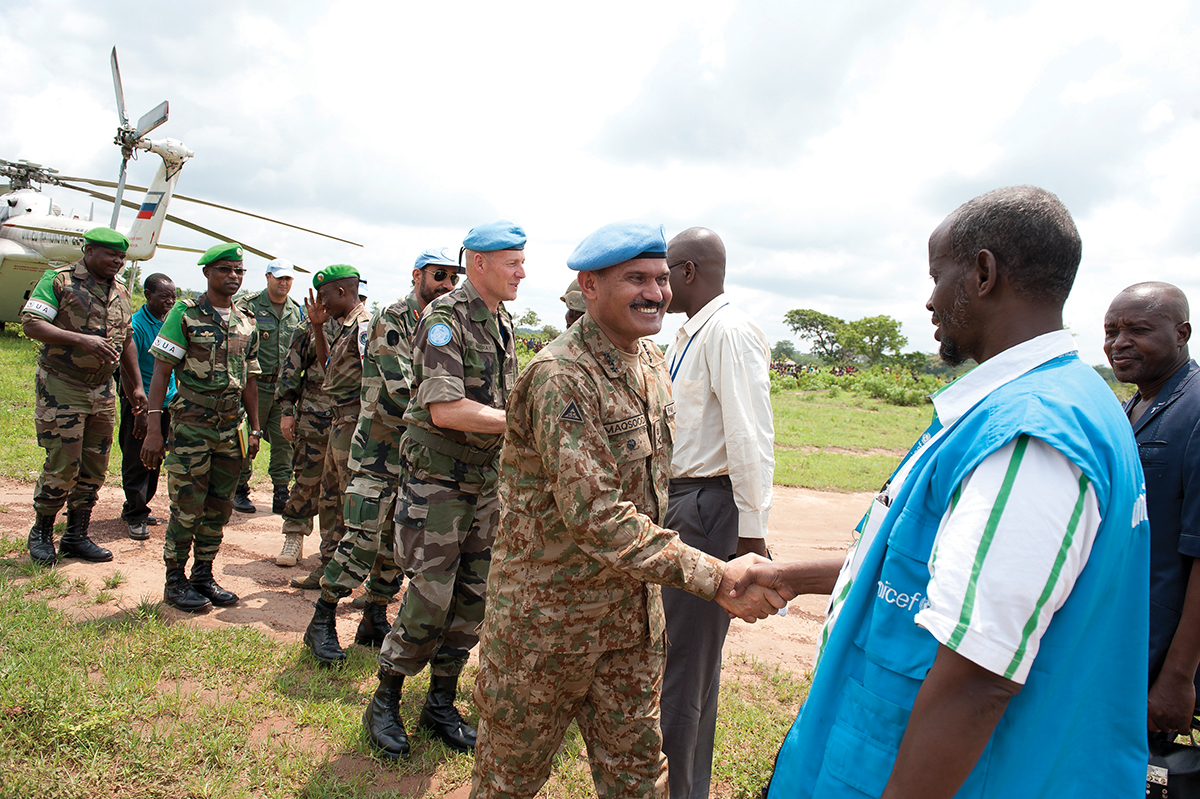
The policy support work of the programme has been quite commendable. The development of the ASF Civilian Dimension Policy Framework in 2006 (at the direction of the AU PSOD) was the result of efforts by the TfP Programme partners – in particular, the African Centre for the Constructive Resolution of Disputes (ACCORD) and the Kofi Annan International Peacekeeping Training Centre (KAIPTC)1 – in consultation with a wide range of stakeholders and partners. The policy framework was eventually approved in 2008 by the AU Ministers of Defence, Safety and Security. The development of this policy framework was a critical step towards the articulation of the ASF civilian dimension concept, its purpose and mandate, its core structures and functions, and the key enabling requirements to ensure its optimum functionality. The framework established the basis and broad parameters upon which all other work on the civilian dimension would take place. Since this time, four out of the five ASF planning elements (PLANELMS) of the regional economic communities/regional mechanisms (RECs/RMs) have also developed and/or obtained approval for their respective civilian dimension policy frameworks, roughly in line with that provided by the AU.
In 2008, the TfP Programme supported the AU in a process that generated recommendations for the staffing, training, rostering and recruitment needs and requirements pertaining to the ASF civilian dimension.2 The programme was also quite instrumental in the initial articulation of the needs and broad parameters of an African civilian roster, which was key to better ensuring that people who had been trained across the continent were lined up for possible employment in peace operations. Today, the AU and the RECs/RMs, largely through the financial and technical support of the Deutsche Gesellschaft für Internationale Zusammenarbeit (GIZ) and the German International Centre for Peace Operations (ZIF), are in the final stages of a three-year process to establish the so-called African Standby Capacity (ASC) Roster, which is intended to support the identification, recruitment and deployment of civilian experts. Key products of the ASC Roster already in place include a database, a draft Human Resource Policy Framework for Recruitment, Selection, Deployment and Management of Civilian Personnel in AU Peace Support Operations, and a Selection Guidelines Manual. It is anticipated that the roster will become operational by the end of 2015.
In addition, in more recent years, the programme has, together with other partners, contributed towards the articulation of concepts around key substantive peace operations areas. These include, for instance, thematic areas such as the protection of civilians, gender, and conduct and discipline. These contributions by the TfP Programme have served to advance the policy discourse and generate further awareness and understanding of these issues and their implications for peace operations in Africa.
When it comes to the training of civilian experts, TfP has played an instrumental role over the years in better ensuring their preparation and orientation for peace operations environments, as well as their roles and functions, both at the predeployment and in-mission levels. This training function has been undertaken alongside or in collaboration with other key training initiatives as implemented by various other institutions and partners, specifically including the regional training centres of excellence (TCEs). The programme has also supported the ongoing work to develop minimum training standards for civilian capacity-building on the continent, as well as streamlining training for civilians across the subregions.
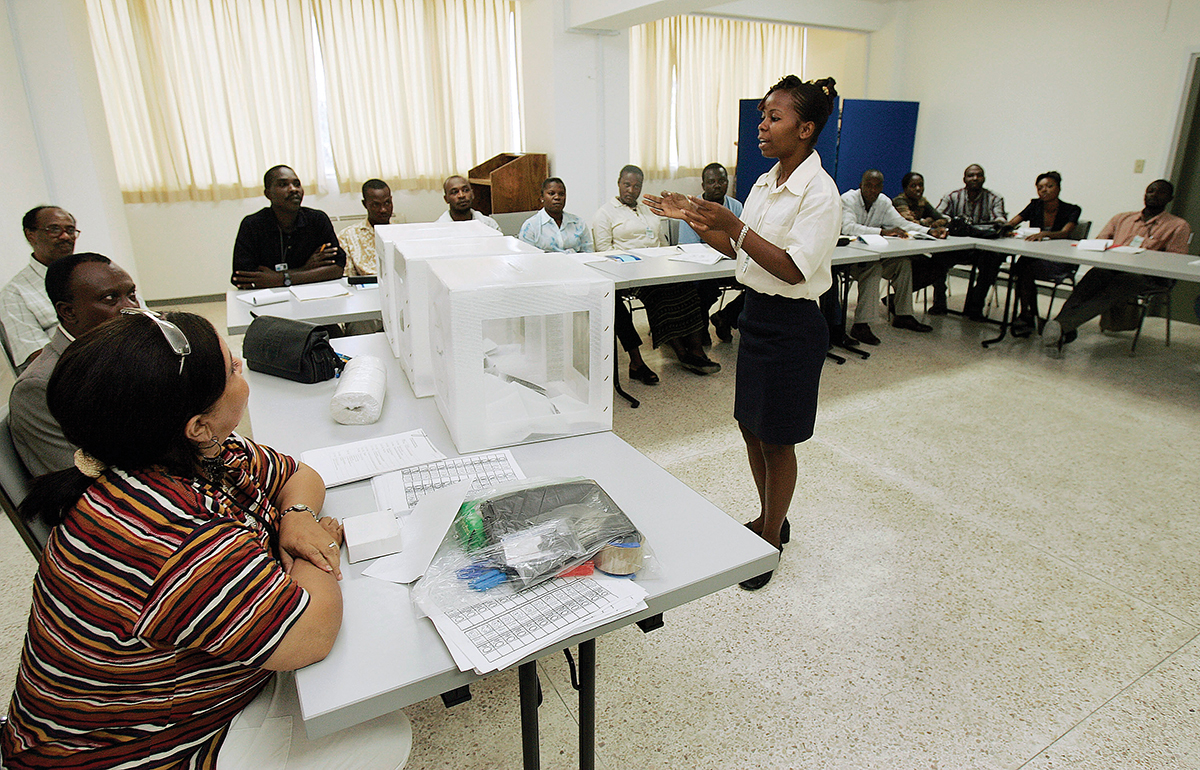
As mentioned previously, for a long time the AU PSOD lacked civilian personnel to develop and manage the civilian aspects of its work, and oftentimes outsourced its work to programmes such as TfP. In 2010, in the context of slow progress on the implementation of the civilian dimension agenda and in light of the need to ensure the multidimensional requirement of the ASF, the PSOD requested the TfP Programme to second a civilian officer to undertake the day-to-day implementation of the work at the PSOD – including, among other aspects, the development of a long-term work plan, the identification of funding for activities and programming, and the recruitment of longer-term PSOD civilian officers in the posts of policy officer, planning officer, training officer and rostering officer. An officer from the TfP Programme at ACCORD was duly seconded to the AU in the second quarter of 2010. By 2014, the PSOD had nine civilian personnel: four directly hired by the AU Commission (incidentally, two of these staff members were previously associated with the TfP Programme) and the rest on secondment to the AU PSOD, AMISOM and the Economic Community of West African States (ECOWAS) via the Norwegian-funded Rapid Secondment Mechanism (RSM).3 In addition, from 2011, a civilian advisor was seconded by the programme to support the head of the PSOD. With the establishment of a civilian component at the PSOD, planning and deployment processes assumed a more multidimensional and integrated character.
Key Challenges and Recommendations
Whilst the programme has played an instrumental role – especially vis-í-vis the areas of policy development and capacity-building for the ASF and AU peace operations in general – some challenges and lessons have emerged and will require attention going forward.
Greater Emphasis on Policy Implementation
Whilst there have been a number of policy formulation processes within the context of the AU’s peace and security work, a major shortcoming has been related to the inability of the organisation (largely due to a lack of means and capacity) to implement its policies effectively and execute its strategies and programmes. On the civilian dimension, a relatively appreciable amount of work has been done in terms of the formulation of strategy and support to decision-making; however, partners such as TfP have experienced mixed results in their ability to positively influence the implementation and monitoring of the various policy products. As such, partners to the AU should engage in a meaningful dialogue with the organisation on how they can work collaboratively to ensure the execution of the three dynamic and mutually reinforcing processes: policy formulation, implementation and monitoring. Support should also be provided to devising relevant activities and programming for successful policy execution.
Narrowing the Training-deployment Dilemma
Whilst much emphasis and resources have been placed on the training of civilian experts for African peace operations, the TfP Programme – like many other training providers – has not been spared from the ‘training-deployment gap’ dilemma. To date, the deployment numbers of trained civilians have not been commensurate with the significant financial and other investments that have been made. This was revealed in the 2009 TfP report, Bottlenecks to Deployment,4 which highlighted the systemic and administrative challenges that makes it extremely difficult for interested personnel (including TfP-trained personnel) to gain employment with organisations such as the UN and the AU. In addition, TfP has struggled to effectively maintain data on and track its trainees and assess the extent to which the trainings have had an impact in terms of the recruitment and deployment challenges faced by the sending organisations (whether the UN, AU or a REC). To address this challenge, which is not unique to TfP, the programme was instrumental in supporting the articulation of the AU continental rostering system. At this stage, the programme is considering how to engage in current processes aimed at operationalising and populating the ASC Roster,5 which is intended to provide trained expert capacity to the AU and RECs/RMs PSOs in a relatively short space of time.
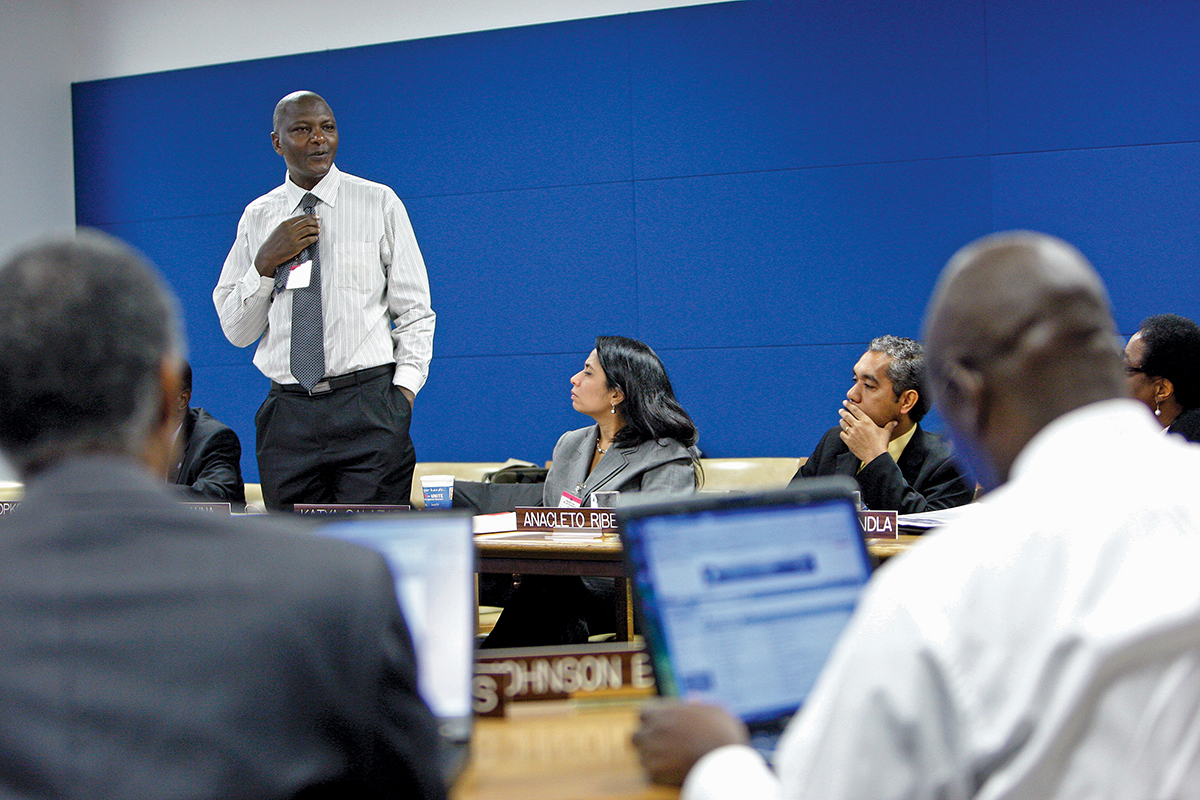
To mitigate some of the associated training-deployment dilemmas, concerned TfP partner organisations have shifted from conducting generic peacekeeping and peacebuilding training to conducting training for personnel who are already in mission, such as those in AMISOM. Whilst there is surely merit in conducting training targeted at personnel who have already been deployed, a key lesson from the TfP experience has been the need to ensure that such training provided directly to peace operations align to the overall strategic intent of the AU, as well as the need to better discern which training activities will be more impactful for the concerned missions in relation to their mandate. The AU’s role in this regard is pivotal, as has been demonstrated in its efforts aimed at improving its strategic engagement with training service providers to ensure they understand the strategic direction and thus conduct training targeted at core priority areas. Currently, the AU PSOD has an enhanced continental training framework and architecture that clearly articulates the roles and levels of responsibilities of the AU, RECs/RMs, member states, TCEs and AU PSOs.6 In addition, an AU PSO course category has been created, with training standards for each of the AU PSO-specific training courses being developed.7 These serve as strategic guidance and direction to partners such as the TfP, to provide the required support to AU missions such as AMISOM, which now have joint mission training cells (JMTC)8 that coordinate relevant multidimensional training, as guided by the AU PSO course category, tailored to enhance mandate implementation.
Improved Support to the RECs/RMs
Since its inception, the ASF has represented an indigenous concept in support of the prevention, management and resolution of conflict on the continent, within the context of the African Peace and Security Architecture (APSA).The involvement of the RECs/RMs were seen as pivotal to the success of the ASF, specifically from an operational perspective, as each of the five regions were required to provide multinational standby forces that were optimally trained and equipped to common standards, operating to common doctrine. A roadmap for the establishment of the ASF was agreed upon between the AU and the regions in 2005, and in 2008, a memorandum of understanding was concluded between them on their respective roles and responsibilities vis-í-vis the mandating, planning, deployment, management and support of ASF operations.

Despite the pivotal role of the regions for the ASF concept – and, indeed, for the entire APSA – the cooperation and coordination between the AU and the regions on specific strategic and operational aspects of the ASF remains relatively poor. In addition, to date the programme has not been optimally structured to support the regions in the development of their peace operations capacities, as per the roles and responsibilities assigned to them within the context of the APSA. This is especially so with reference to work on policy support. It is thus observable that the gap between the AU and the regions in terms of their ability to plan, deploy and manage multidimensional peace operations capacities continues to widen. In the immediate term, the TfP Programme, together with other partners, should place additional emphasis on supporting the regions to meet their targets to ensure the full operationalisation of the ASF.
Broadening the Focus of the TfP Programme
As has already been mentioned, the TfP Programme was established at a time when there was a critical need for the development of Africa’s peace operations capacities and the need for the development of multidimensional and integrated approaches for the planning, deployment and management of these operations. Whilst the focus on civilian (and police) capacity development has been relevant for peace operations, there has also been a greater emphasis by the AU and the RECs/RMs to respond to the wider elements of the APSA. In addition, a number of other peace and security scenarios are evolving beyond the peace operations context, for which civilian experts are also required. For example, the AU has established political missions following its peace operations deployments in Mali and the CAR.9 The AU’s African Solidarity Initiative (ASI)10 is aimed at mobilising support from within the continent for countries emerging from conflict, and specifically provides for the deployment of civilian expertise in this regard. Furthermore, the AU Support to the Ebola Outbreak in West Africa (ASEOWA) mission employed a number of civilian medical personnel to the affected countries. These growing deployment scenarios represent an increasing requirement for civilian capacities across the continent. Staying abreast of these developments and their associated capacity needs will require possibly a broadening of the TfP Programme’s mandate from its original conception, to ensure its ability to provide the requisite support. Indeed, the programme could further support the AU in the articulation of a wider peace operations concept that takes into account this evolving context.
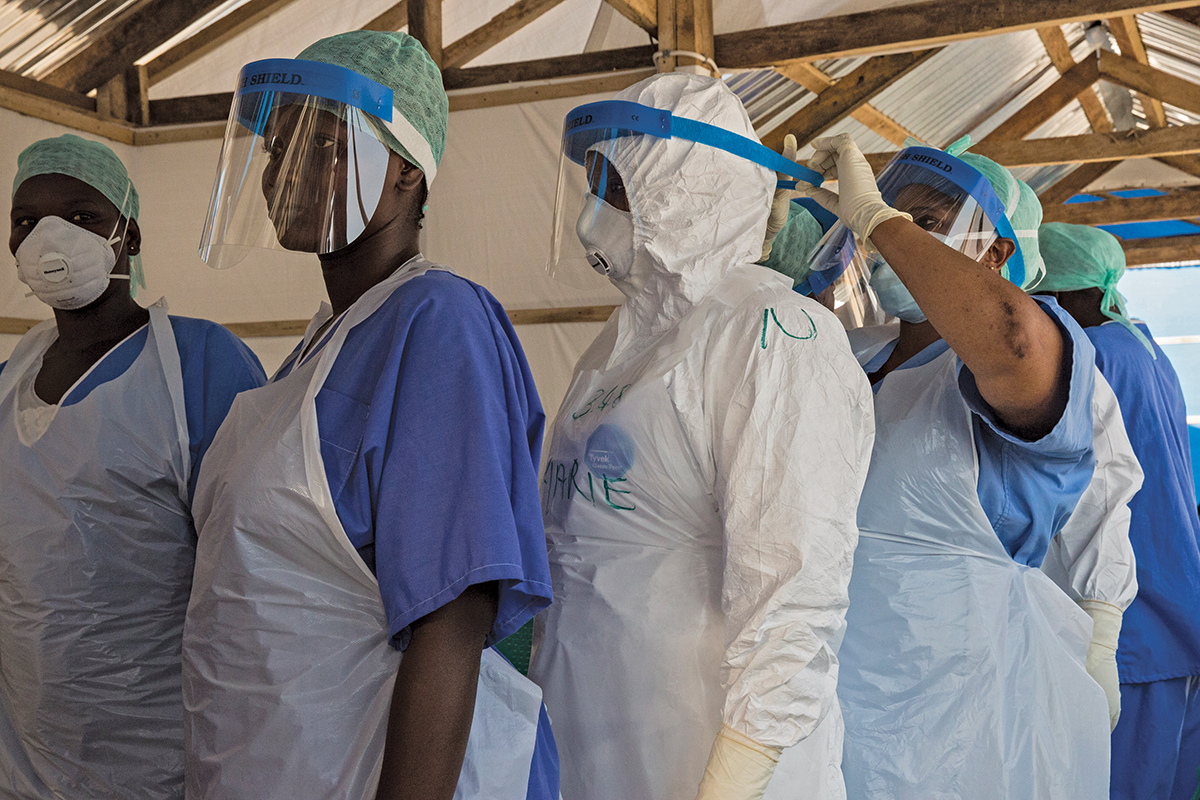
Conclusion
An appreciable amount of work has been achieved on the civilian capacity agenda since the TfP Programme was established in 1995. Several of those achievements can be attributed to the pioneering work of the programme, especially related to the implementation of work around the multidimensional imperative of peace operations. A tremendous amount of awareness and understanding has also been generated through TfP’s work. Much remains to be done in an ever-evolving security landscape where capacity needs and requirements are constantly emerging. In maintaining its lead role and contribution to the development of the civilian (and police) dimension of AU and UN peace operations on the continent, the TfP Programme will have to maintain a dynamic strategic engagement with the AU and the regions, to ensure it is addressing core priority and niche areas.
However, it is worth noting that, as a ground-breaking programme, TfP has been prone to challenges in support provided to the AU in enhancing the civilian (and police) dimensions of its PSOs, within a multidimensional context. These challenges can be attributed to the fact that TfP’s support has been focused mainly on the enhancement of current AU missions management and the capacity of long-term PSOs through the ASF, which is part of the APSA and still in development. In addition, TfP’s engagement with the AU has shown that it is not a very simple task for a programme consisting of civil society-type organisations to work with and support intergovernmental organisations such as the AU. This is because developing and implementing policy-related initiatives within the AU requires approval processes by AU policy organs (which meet at particular intervals) to endorse such policies and direct the implementation of processes that will facilitate the realisation of expected objectives.11 Thus, the realisation of policy and process development and implementation has and will continue to be out of the control of the TfP Programme.
Notwithstanding, if the TfP Programme is able to ensure its commitment to the AU is at the centre and focus of its support12 in a predictable, coordinated and sustainable manner,13 then there will be immense opportunities for the programme to provide direct support to processes recommended by AU policy organs. This is based on the fact that the AU has demonstrated its willingness to work not only with the TfP Programme but with the Norwegian government as a whole, through the signing of a memorandum of understanding on the margins of the January 2015 AU Assembly of Heads of State in Addis Ababa, Ethiopia. Thus, the programme should capitalise on such demonstrated commitments, including engagement with the PSOD through its participation at the annual general and international advisory board meetings,14 to align its support to identified and recommended processes and strategic areas of support that the AU prioritises. This will ensure the achievement of greater results by the TfP Programme in its support to the AU in enhancing the civilian (and police) dimensions of AU PSOs, within a multidimensional context.
Endnotes
- This was done in association with, and with the support of, the African Peace Support Trainers Association (APSTA).
- An ASF Civilian Staffing, Training and Rostering Workshop was held in Kampala, Uganda from 10 to 12 July 2008. The main recommendations of the workshop were subsequently endorsed by the Third Ordinary Meeting of the Specialised Committee on Defence, Safety and Security, 15 May 2009, in Addis Ababa, Ethiopia.
- The RSM was established as a joint project between the AU Commission, the Royal Norwegian Embassy in Addis Ababa and the Norwegian Refugee Council (NRC) in June 2013. It is intended to support the development of the civilian dimension of AU peace support operations with reference to planning, deployment, management and support. The RSM is intended as an interim measure until such time that these needs can be addressed through the AU’s internal mechanisms.
- This study was led by the Norwegian Institute for International Affairs (NUPI), with contributions from other TfP partners, to understand the training-deployment dilemma and find ways of addressing this gap.
- The ACS Roster is the official approved nomenclature of the initially referred to ASF Civilian Roster to ensure incorporation of military and police components, post-conflict reconstruction and development and mediation capacities beyond the Peace and Security Department, including Political and Social Affairs as well as other relevant departments.
- This is in line with the ASF Training Policy, which is currently under review.
- This process is currently being implemented, based on recommendations from the ASF Training Needs Analysis conducted in 2015 by APSTA.
- The AMISOM JMTC was established in 2014 by the AU PSOD as the first-ever mission training cell within an AU PSO to coordinate mission training with strategic guidance and support from the AU PSOD.
- AFISMA was followed by the AU Mission to Mali and the Sahel, whilst MISCA was followed by the AU Mission to the CAR.
- Launched at the 19th Ordinary Session of the Policy Organs of the AU, held in Addis Ababa, Ethiopia in July 2012.
- The Specialised Technical Committee on Defence, Safety and Security is one of the main AU decision-making organs for peace and security that holds one annual Ordinary Meeting, with the possibility of having one Extra Ordinary Meeting only when there is a really serious need to discuss or endorse particularly important and timely issues.
- This commitment was made by the Deputy State Secretary of the Norwegian government during the International Advisory Board (IAB) Meeting in Oslo, Norway in November 2014.
- The AU PSOD participated in the 2014 TfP IAB and reiterated that predictability, coordination and sustainability of support from TfP will definitely facilitate a more successful partnership and support to enhancement of AU PSO processes.
- AU PSOD’s participation in such meetings have been a way of ensuring linkages between TfP partners and the PSOD as a beneficiary of the programme, in terms of ensuring that the actual and prioritised needs of the AU PSOD are understood by TfP partners, to ascertain their support and contribution to the implementation of such initiatives in cooperation with the AU PSOD.

